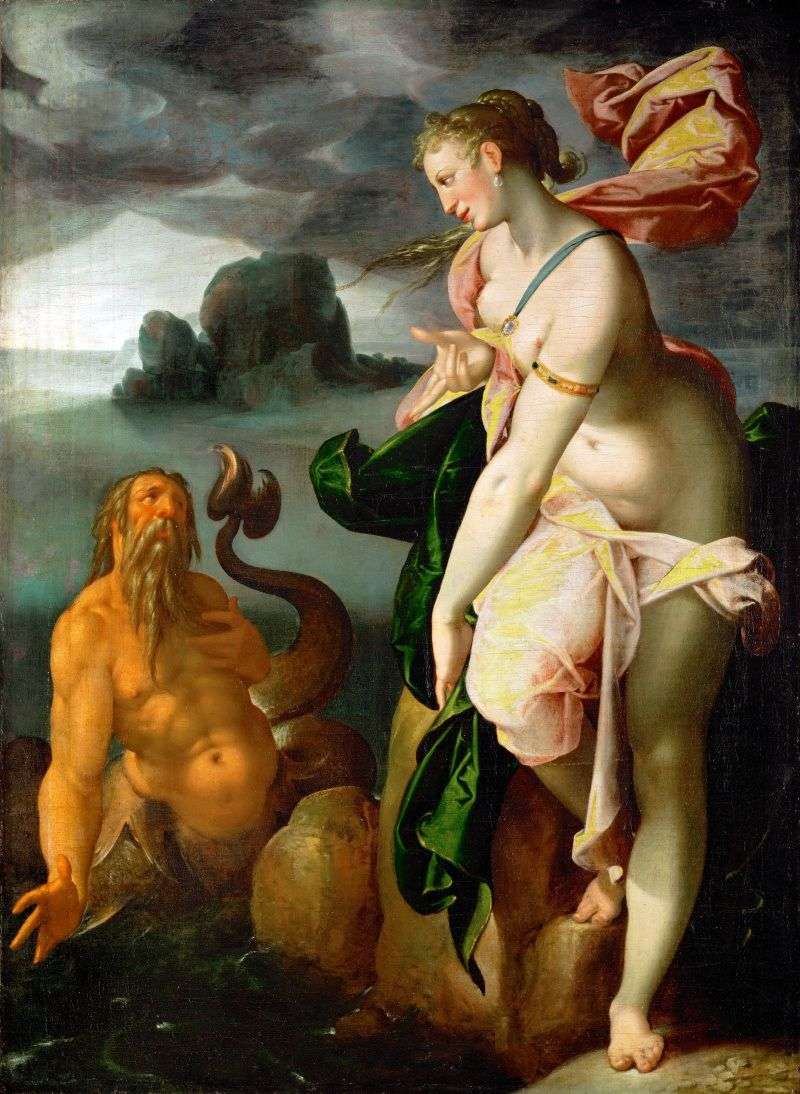
A painting by the Flemish painter Bartholomeus Spranger “Glaucus and Scylla”. The size of the picture is 110 x 81 cm, copper, oil. Glaucus, in mythology – the Greek deity of the Greeks, who has the gift of prophecy and has the ability to take different forms. In the myth of the Argonauts, Glaucus is the builder and helmsman of the Argo, who became a sea god after the Argonauts battle with the Tyrrhenians.
Glaucus was considered the son of the Ocean and was the patron of fishermen and divers. It was depicted as a semi-human half-fish, with an old face and a big beard. In the oldest Greek myths, Scylla seemed a terrible and powerful monster: she had twelve paws, six long, flexible necks rose on her shaggy shoulders, and on each neck she protruded over her head; in her jaws her teeth sparkled with frequent, sharp, three-rowed teeth.
In mythological sources, Scylla is considered the daughter of Forkis and Hecate or Triton and Lamia, or Typhon and Echidna, or Poseidon and Cratayida. In postgamer tales, Scylla is sometimes seen as a beautiful girl: so, Glaucus sought her love, and the sorceress Circe, who herself was captivated by the Glaucus, out of jealousy, her beautiful body disfigured her, turning her lower part into a series of dog heads.
According to another legend, this transformation was completely Amphitrite, which, noticing that Poseidon was deceived by the beauty of Scylla, decided in this way to get rid of a dangerous rival. For the kidnapping of heron bulls, Hercules Scylla was killed last, but again brought back to life by Forkis. Virgil mentions several Scylls, which among other monsters inhabit the vestibule of Tartarus. In works of art, Scylla was portrayed as a monster with a dog’s head and two dolphin tails or with two heads of monsters and a dolphin tail, as well as a beautiful naked girl.
